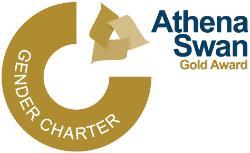IHW gender pay gap 2020/2021
Published: 2 May 2018
Athena Swan champion, Dr Breda Cullen, reports on IHW gender pay gap data – the difference in the average pay of men and women across our institute – which we use to inform our action-planning to close the gap
As part of our Athena Swan work, we provide information on the IHW gender pay gap annually and use this to inform our action planning to close the gap.
What is the gender pay gap?
The gender pay gap is a measure of the difference in the average pay of men and women in an organisation, regardless of the nature or level of their work. It highlights the different number of men and women across all roles. It is different from an equal pay comparison, which involves a direct comparison of two people or groups of people carrying out the same type of work or work of equal value.
How do we track this?
The UofG HR team provides information about the gender pay gap across all IHW staff, calculated as the difference in mean or median salary. Data are based on full-time equivalent salary. Market supplement payments (which apply to some clinical staff) are not included. A positive value for the gender pay gap means that men’s earnings are higher than women’s.
Gender pay gap results 2020-21
Results calculated in summer 2021 indicated that the mean IHW gender pay gap was 19.9%. The median pay gap was 2.9%. The large discrepancy between the mean and median gaps appears to be driven by the disproportionate number of female staff in lower grades (including some professional services roles), where 42 of the 50 lowest earners were women (for example, all Grade 4 staff in IHW are female). This contrasts with a 1:1 gender ratio among the top 50 earners. The most recent gender pay gap results for the whole University show a mean gap of 14.7% and a median gap of 13.7%.
Data stratified by grade (with MRC grades converted to UofG equivalents) indicated that the largest mean gender pay gap in IHW was at Grade 5 (5.6%). The mean gaps were smaller for other grades, ranging from -1.7% (Grade 7, in favour of women) to 2.4% (Grade 8).
At professorial level, the overall mean gap was 8.2%. The data for the four professorial zones indicated that the gap was driven by large differences within zone 3 (22.1%) and zone 2 (11.3%). Differences within zones 1 and 4 were smaller - though still of concern - at 4.9% and 3.2% respectively. It should be noted that these data are based on small numbers of staff in each zone.
The overall mean gap for clinical staff was 6.3%. Within the separate clinical grades, the mean gap was much larger for Clinical Research Fellows (24.0%) than for other grades: Clinical Academic 2.6%; Clinical Consultant -4.3%; unable to calculate for Clinical Lecturers as all were male.
What happens next?
These results will inform our actions to
- support promotion of women, including to professorial zones 2 and 3, to reduce the overall gender pay gap,
- support the career development of professional services staff, and
- reduce the gender imbalance in lower grade roles.
Breda Cullen
IHW Athena SWAN Champion
UofG equality and diversity pay gap information
First published: 2 May 2018
<< August 2021



